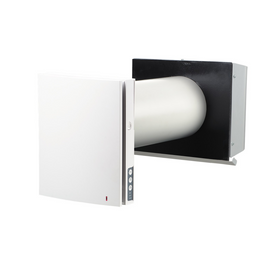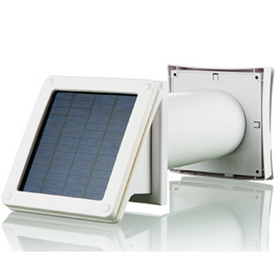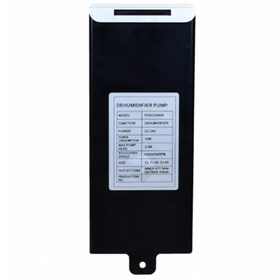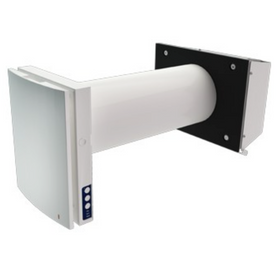
Are Plastic Food Containers Safe?
Last Updated: Feb 11, 2025A critical aspect of sustainable living is the importance of reusing and repurposing rather than buying new. Reusing and upcycling are incredibly beneficial to the environment in reducing our need for new materials that would require mining, growing, manufacturing, and shipping. However, in some cases where buying new is in our best interest, particularly pertaining to your health. Plastic food containers are at the top of that list!
Table of Contents
- Your Vintage Tupperware® Containers Have Seen Better Days
- The Truth About Plastic Food Containers
- Is BPA and BPA bad?
- Are plastic food storage containers dangerous?
- Which Plastic Food Containers Are Safe?
- Are New Plastic Food Containers Safer?
- What Is the Safest Food Storage Container?

Your Vintage Tupperware® Containers Have Seen Better Days
Tupperware® is a big household name for durable, hard plastic food containers. Established in Massachusetts in 1946, Tupperware® grew in popularity as homemakers could run businesses by hosting Tupperware parties. And, because Tupperware® was purchased directly from a friend, family member, or trusted neighbor, Tupperware® became—and still is—a highly respected brand. In fact, in many ways, it has become a generic term. Other brands of plastic food containers are often called "Tupperwares"—just like Kleenex® has become a generic term for facial tissues. So, we are refraining from using the ® next to the name for the rest of this article. Hopefully, the company will forgive us!
There's no arguing the long-term durability of Tupperware food containers. Still, in reality, their composition isn't all that different from any other plastic container. As research has progressed in the study of plastics, it's been proven that plastic food containers can be extremely detrimental to our health. Plastic containers slowly leach chemicals into the food and beverages we store in them.
Tupperware officially outlawed the use of Bisphenol A (BPAs) in their products in 2010. However, because Tupperware plastic containers hold up so well, you may still have some pre-2010 pieces in your cabinets. If you inherited Tupperware from your mother, bought your own before 2010, or picked up a few vintage pieces at a thrift shop, it's time to let them go. Why? Read on.

The Truth About Plastic Food Containers
In 2011, a study by Environmental Health Perspectives discovered that most plastic food containers leach estrogen-mimicking chemicals. That's led to a massive shift from plastics food containers made with BPA, a chemical used to harden the plastic. Unfortunately, many manufacturers swapped the BPA for the equally dangerous Bisphenol S (BPS). Federal agencies do not currently test new materials for toxicity before they're released for purchase, sadly. So, those seemingly trustworthy BPA-free plastics may not be as safe as you think.
Is BPA and BPA bad?
Scientific American found traces of BPS in 81% of tested blood. Both BPA and BPS have been tested on animals, demonstrating hormone-mimicking, estrogenic properties, hazardous to women and children. Plastics containing BPA and BPS pose significant health concerns, including:
- Obesity
- Asthma
- Heart disease
- Breast cancer
- Type 2 diabetes
- Reproductive disorders
- Cardiovascular disease
- Development of the prostate gland
- Impact on the brain development of infants and children
- Behavior problems in infants and children

Are plastic food storage containers dangerous?
Even safe plastic food-grade containers should be used cautiously to avoid exposing you and your family to toxic chemicals. Avoid storing greasy and acidic foods in plastic. These substances may degrade the plastic and cause safe containers to become less safe over time. When washing, be sure to place any plastic food containers on the top shelf of the dishwasher, where they'll be exposed to less heat than causes the plastic to warp and break down. And never heat food or beverages in a plastic container, no matter how safe you believe it is. Food and drinks stored in safe plastic should be transferred to a microwave or oven-safe surface for heating, even if it's a quick reheat.
Before using a safe plastic food container or a plastic baby bottle to feed your little one, give the vessel a quick inspection as conditions change with each wash. Any containers that appear warped, cracked, scratched, or cloudy should be recycled immediately. You should pay special attention to lids and caps, as those may degrade more quickly than the container itself.
Which Plastic Food Containers Are Safe?
Most plastic food and beverage containers have standardized marks to help consumers make smart choices. Turn your plastic food storage containers, drinking cups, and baby bottles over to find a number printed on the bottom. If they're marked with a #2, #4, or #5, they are generally recognized as safe for food and drinks. If they're marked with a #3, #6, or #7, they are considered high-risk plastic and should not be used for consumables. Be especially cautious of reusing plastic containers that store-bought food comes in, one-time-use disposables, and containers not intended for food storage.
Are New Plastic Food Containers Safer?
While vintage Tupperware and other hard plastic food containers are adorable and still sturdy after all these years, they may contain BPAs. As discussed above, while switching to BPA-free has become widely popular, many newer plastic container manufacturers have exchanged BPAs for equally toxic BPSs. Since regulations have yet to be enacted to inspect all plastics before consumer sale, BPSs might one day be brought to light and replaced by yet another chemical additive.

What Is the Safest Food Storage Container?
Are you still using plastic food storage containers? If so, your safest option is to stop now and switch to safer materials like glass, ceramic, or stainless steel. Remember, all those plastics should be safe for recycling, making sure they find their way to the proper bin!
Glass food storage containers used to be expensive but have come down in price considerably. When choosing new glass food containers, look for those made in the USA, Canada, or another trusted manufacturing location free of lead and cheap chemical additives. Be aware that some glass food containers made in China have been found to contain lead and cadmium, especially those painted with pretty designs.

Those old-fashioned Mason Jars are made of sturdy glass and are great for drinks, salads, and overnight oats. But, even though the tops are now BPA-free, they may contain BPS. Luckily, you can buy alternative lids and won't have to toss your collection.
Silicon food containers are on the rise in terms of safety, versatility, and functionality as well. Again, keep in mind that not all silicon products are safe, so choose your containers from a reputable, responsible source.

Stainless steel produced by ethical manufacturers is still a tried and true safe food storage material, but keep in mind these are never microwave-safe. Klean Kanteen is a Certified B Corporation whose mission is to eliminate single-use disposable water bottles. They are always a safe choice and offer excellent food storage options in addition to water bottles.
When in doubt, you can always transfer your stored food or beverage to a safe plate, bowl, or cup before heating to avoid any potential BPA or BPS exposure. It's always better to be safe than sorry.

We know it's challenging to get rid of things that still technically can be used (and by "get rid of," we mean recycle). But, since there's a potential to damage your family's health, it's best to make the switch. The good news is, you can lower the levels of these harmful chemicals in your and your loved ones' bodies quickly, with just a few changes at home.
Laura Bourland
Laura grew up in the California suburbs, far removed from environmentalism, but nature always has a way. She uprooted her life in 2015, moving to the countryside of Washington to live a more sustainable and simple life on 12 acres. She and her fiancee are learning on the job as they attempt everything from gardening and natural pest control to eco-friendly building and home improvement.











